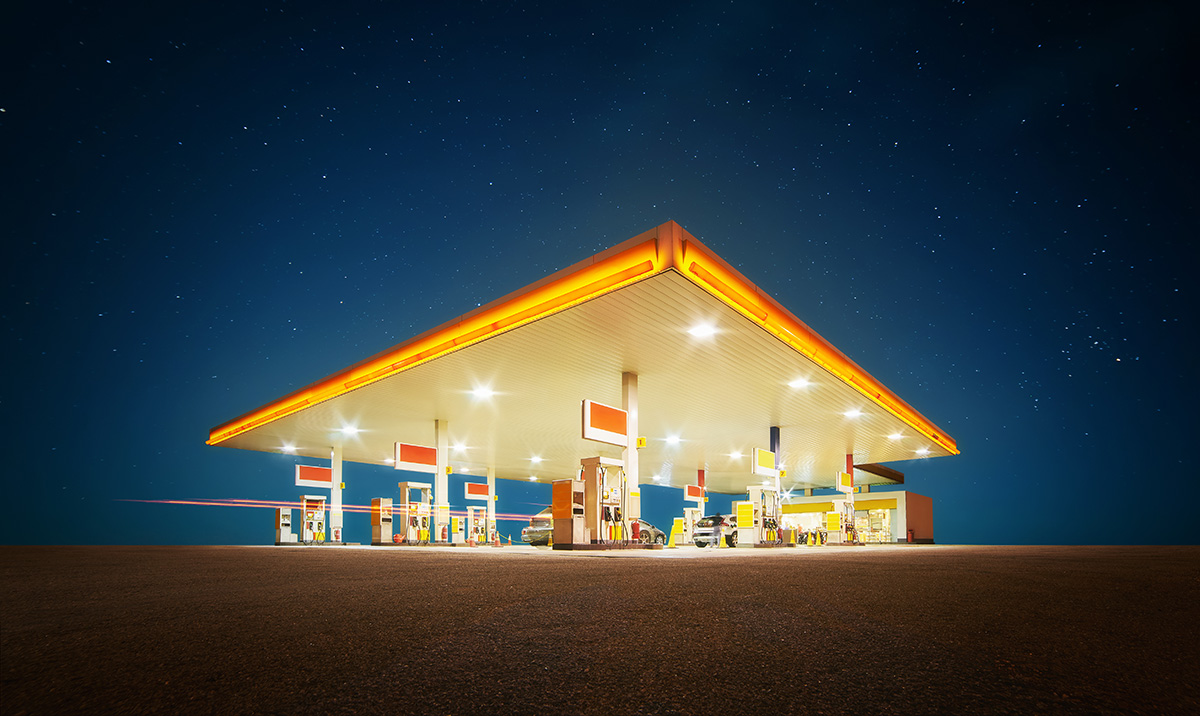
Nearly everyone can recall a visit to the petrol station. It might not be a particularly riveting experience, but it is nonetheless one of the countless trips that make up our everyday lives. Or used to, pre-pandemic.

Find a working fuel pump, have a quick browse of the confectionary, and – if you’re pushing the boat out – drop by the carwash on the way out. A trip to the forecourt has hardly changed in decades. While other sectors have leveraged digital technologies, the fuel retail sector noticeably lagged.
But the outbreak of Covid-19 forced the industry to reassess its priorities. With vast swathes of the global population confined to their homes practically overnight, fuel sales plummeted. Add to this the rise of alternative fuels, and the urgency of reconnecting with consumers becomes clear.
As the world re-emerges into some semblance of normality, there is an opportunity for the fuel retail sector to update its business model and embrace digitalisation. If it is to avoid long-term decline, this needs to happen sooner rather than later.
Time for change
Before the pandemic, the fuel retail sector was already grappling with its fair share of challenges. According to Experian and the Petrol Retailers Association, the number of petrol stations in the UK dwindled from 40,000 sites in the 1950s, to just 8,400 by 2018.
As consumer demands evolve, the fuel retail sector has struggled to keep up. For Shan Roy, VP at global IT and business consulting services firm CGI, the reason for this is relatively straightforward. “Ultimately, fuel retailers always had a captive market,” he explains. “People needed to fuel their cars, and car numbers were growing. All they needed to worry about was having a good product, and whether their fuel station was in the right location.”
As a result, Roy contends that when it comes to embracing digital technology, other retail sectors are “light-years ahead” of fuel. While consumers may have accepted this in the past, he continues, in the current climate, their engagement with the fuel retail experience is likely to diminish, unless their demands start being taken into consideration.
This lack of attention to changing consumer behaviour could be a costly mistake for the fuel retail sector. “I think they’ve missed a trick in understanding their customers, and what they’re using the forecourt for,” says Roy. “They should have gone beyond the plastic cards and stamps that people remember from the ’80s and ’90s – the first step is actually building that customer loyalty, using digital to increase engagement.”
Reimagining fuel retail
There are encouraging signs that the sector is starting to realise the key role digital technology has to play in its future.
Roy points to the introduction of mobile payment at the pump as an example of where fuel retailers have demonstrated innovation – a service which is especially relevant during Covid-19, when consumers are reluctant to leave their cars. However, he is keen to stress that the sector’s digital journey has only just begun, and there is still a long way to go.
“It’s almost like a point solution,” he reflects. “They’ve digitally enabled [payment] but without really thinking about the bigger picture and how it fits into the whole fuel retail experience. So yes, they’ve made it easier to get fuel, but it’s not going to be a game-changer.”
Engaging with customers
Moreover, Roy highlights the emergence of loyalty apps as a way of engaging with consumers. The next stage, he says, is to start using the data-driven insights gained to create more relevant and personalised services.
One of the major challenges is sifting through vast data lakes to identify the right information to pull together. “Rather than being overwhelmed by the data, it’s about starting small and learning where value can be added for both the retailer and the customer,” explains Roy. “So, for example, we might use loyalty platforms to start thinking about customer’s order patterns, and then make recommendations based on that.”
Above all, the priority should be ensuring a seamless, easy experience when visiting a forecourt. “Customers should be able to go to one platform and get all of these different products and services in that single place,” says Roy.
To make this digital transformation a reality, third-party digital goods and services have a crucial role to play. Innovation is being brought by new entrants to the market. For example, aggregators are creating more simple convenience channels to help give customers that next-generation experience.
Building for a new era of fuel
Looking further ahead, as the number of hybrid, electric and autonomous vehicles grows the demand for traditional fuels will continue to decrease. Data from EV volumes reveals that global sales of electric cars rose by 43% in 2020 to more than 3 million, while overall car sales dropped by a fifth during the pandemic. To survive, fuel retailers will need to adapt their offerings to cater to these new drivers.
“The pandemic has already started this conversation about what the future of the forecourt will look like,” says Roy. “Electric vehicles are going to be a whole new puzzle for retailers. They’re going to have to re-educate consumers on what the forecourt means, whether it’s adding electric scooter hire or creating a community hub of different offerings.”
Over the past year, fuel retailers have been given a unique opportunity to reimagine the next chapter of the forecourt. For those willing to embrace digital innovation and transform their services to enhance the customer experience, it is an exciting time. Others, no doubt, will be left behind.
For Roy, the choice for fuel retailers is a simple one. “Business transformation will happen whether you like it or not,” he says. “The only way to get ahead is by embarking on some of those digital experiences that many of your customers are already using. The question is: will you be the one to offer these services?”






